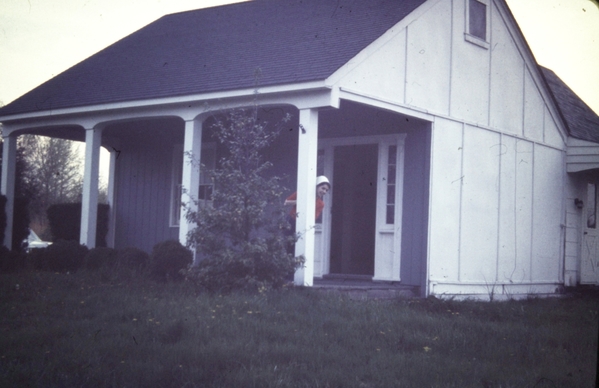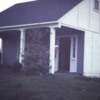TELEDOC, thanks for jogging a fuzzy memory out of an Old Timer's noggin: I remembered my father making me a bulletin board with wooden frame out of Homosote. went up in my bedroom around 1962.
Thanks for the great info and suggestions. I got the answer to my question. Homasote is the best and there isn't a really good substitute.
Homasote was used as a substitute for lath and plaster a kong time ago. It provided both sound deadening and so insulating. I've seen it used on exterior walls of houses. The rain doesn't seem to bother it after a dozen coats of paint.
I've used it for 50 years as the tabletop of my layouts. My table frames have always been 1" 34zlumber with cross supports every 12" to 18". I've never used a plywood underlayment on flat tables. I've always used a supporting underlayment when cutting the Homasote for inclines, etc. As a kid I even walked on the tables.
You don't need 3/4" plywood. A thinner sheet will do. Some even use luaun.
The yellow, pink, and blue are EXTRUDED polystyrene and are used in construction where strength and impact resistance are required. The colors signify the density and compressive strength. The white is EXPANDED polystyrene and has little strength. None of these will hold a small track screw.
Sound absorption/reflection BTW are Homasote, extruded polystyrene, and plywood.
Screw holding BTW are plywood. Homasote, and extruded polystyrene.
Bending stiffness (1/2" thickness) BTW are plywood, Homasote, and extruded polystyrene.
These is another product similar to Homasote that has been discussed on the Forum. It has a black coating on one side. It has slightly better sound properties but is weaker everywhere else. It is cheaper, lighter. and better availability. Perhaps someone can chime in with its name.
Jan
When I bought my house there was Homasote on some the interior walls and a portion of an exterior wall. Termites loved it. In fact, they made tunnels all the way to the back of the wallpaper on the kitchen wall. Photo from 1974.
Attachments
Gentlemen,
Dan Padova is giving great advise about why I do not use Homasote. It can draw termites depending on where you live, it is not treated in any manner. There is a alternative, however it costs a lot more money. I have talked about the Acoustical Block Ceiling Tile here on the OGR in the past. It works great is easy to handle in the different sizes, your builders store will carry, and it really deadens the sound. If you throw an indoor/outdoor carpet over it, the sound deadening ability is incredible, works especially well with FasTrack.
Happy Layout Building,
PCRR/Dave
So confused!!! The homasote web site tells a different story. It states, " a homogeneous composition manufactured with uniformly
distributed protection against termites, rot, and fungi and resistance to moisture." Hmm, who to believe. I can't take a chance with termites. So i guess track will be screwed to plywood. Cheaper and I can buy more locomotives and equipment.
Build your table with 1x4 for frame and legs and 1/2 inch A-C plywood. Use Midwest cork roadbed and Gargraves track with Ross Custom switches. You will then live happy ever after. No need for 2x4 lumber or 3/4 inch plywood. No Homosote. Use L-Girder construction as described by Linn Wescott in his classic book on benchwork. No Glue, use dry wall screws for all layout construction. Thirty years later still going strong.
Stephen G,
Dan told you of his real experience with the product, however maybe the new stuff is actually being Treated for insects, it's your house. Dan is no the 1st person who has had this problem.
Turbine's construction method is a good one, unless you want to run Tin Plate Trains, GG Track and Ross Switches do not play nice with Tin Plate. If you intend to run post war and modern trains go for it. I agree that Midwest Cork is nice stuff, still pretty noisy with FasTrack however, and I would still use 3/4 ply with Wescott's bench work design. Lots of good ways to Engineer and build a layout to fit your individual needs. Choose wisely.
PCRR/Dave
My layout uses 2x4’ modules built using 1x4 framing, 1/4” plywood decking, 1/2” homasote sub-roadbed with homabed 1/4” roadbed under the tracks, all glued together with white glue, and sealed with at least two coats of lacquer sanding sealer on all wood surfaces, plus two coats of gray latex exterior house paint on all homasote. My layout was built in 1990 in humid South Florida and has seen the garage flooded with over 6 inches of water on multiple occasions, several hurricanes (including Andrew & Wilma), and wild temperature shifts from summer to winter, with no ill effects noted to the homasote. A good friend’s HO layout was originally built with plywood benchwork, and his new section was built with 2” extruded polystyrene foam (blue or pink), and the foam was much noisier than the plywood. For noise suppression, the foam was useless.
As for termites, after many years of living in a South Florida termite pit inhabited by multiple species of termites, I can attest that termites are far more attracted to unpainted whitewood, plywood, and corrugated cardboard than they are to homasote.
Bill in FtL







